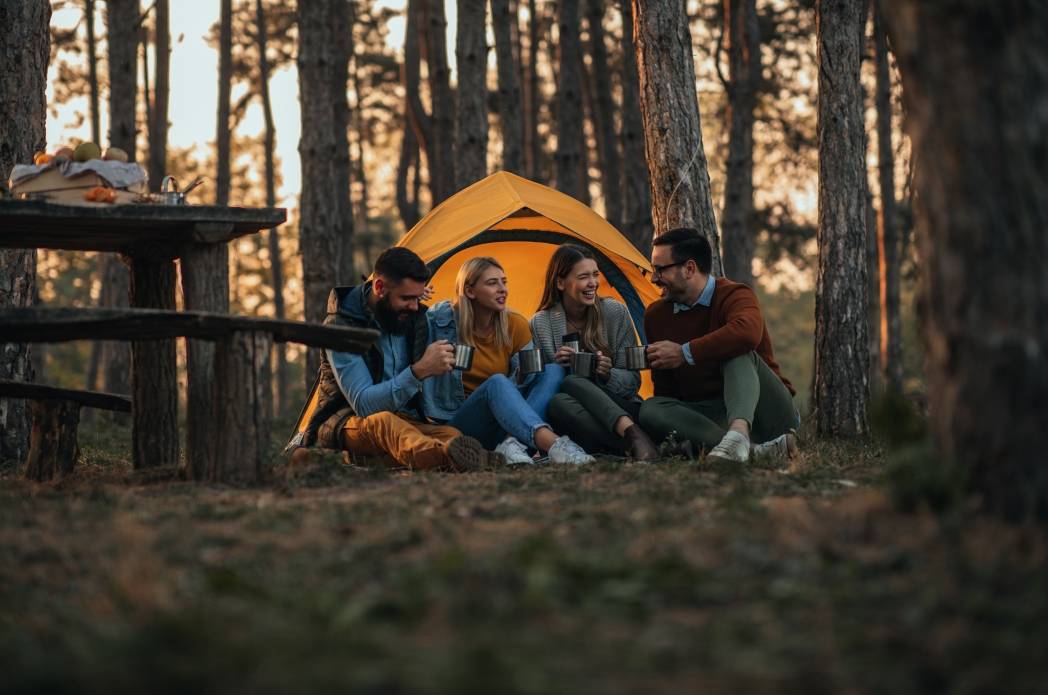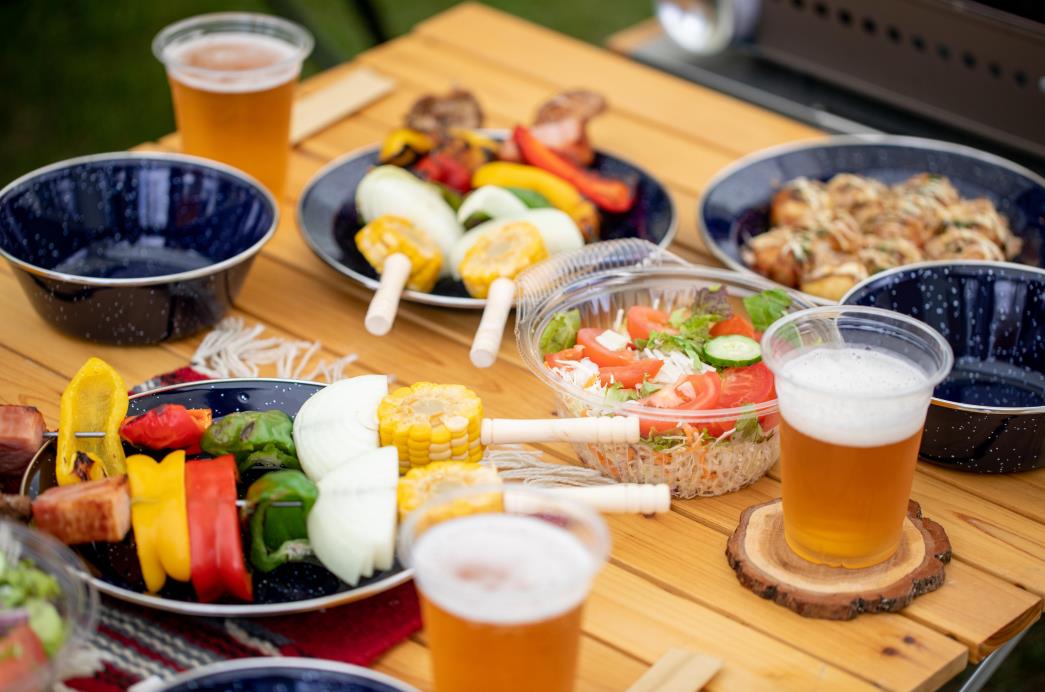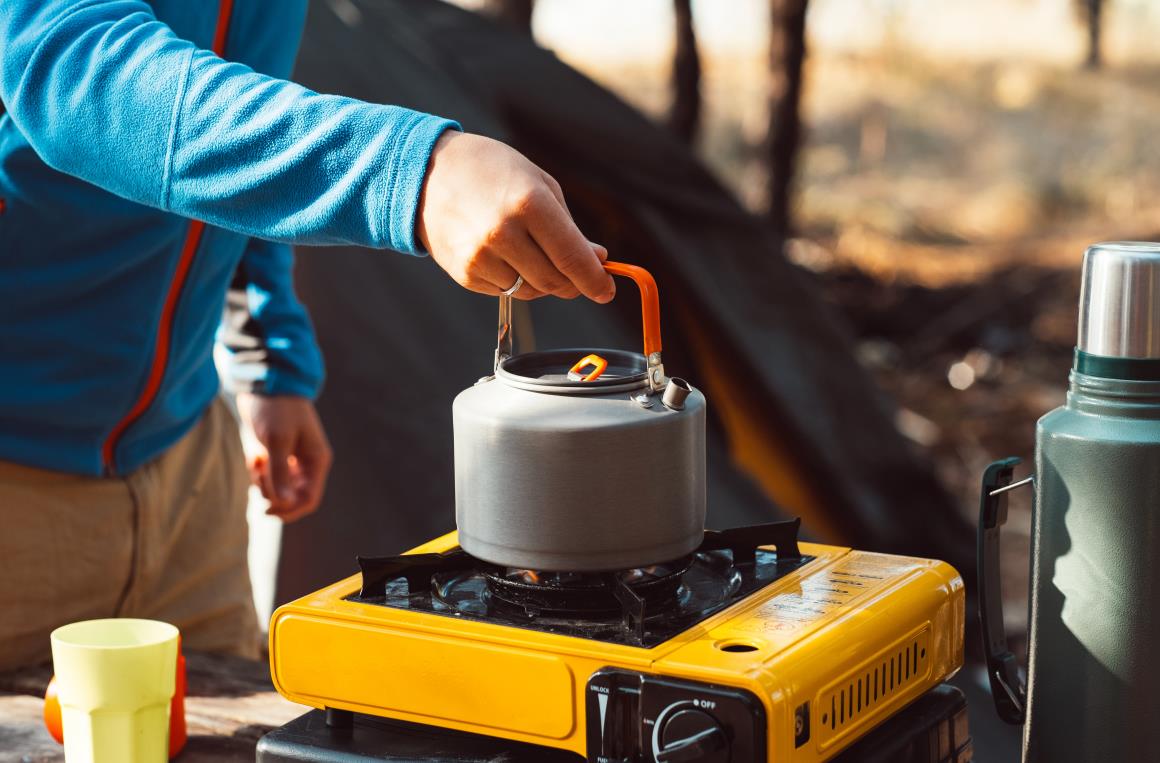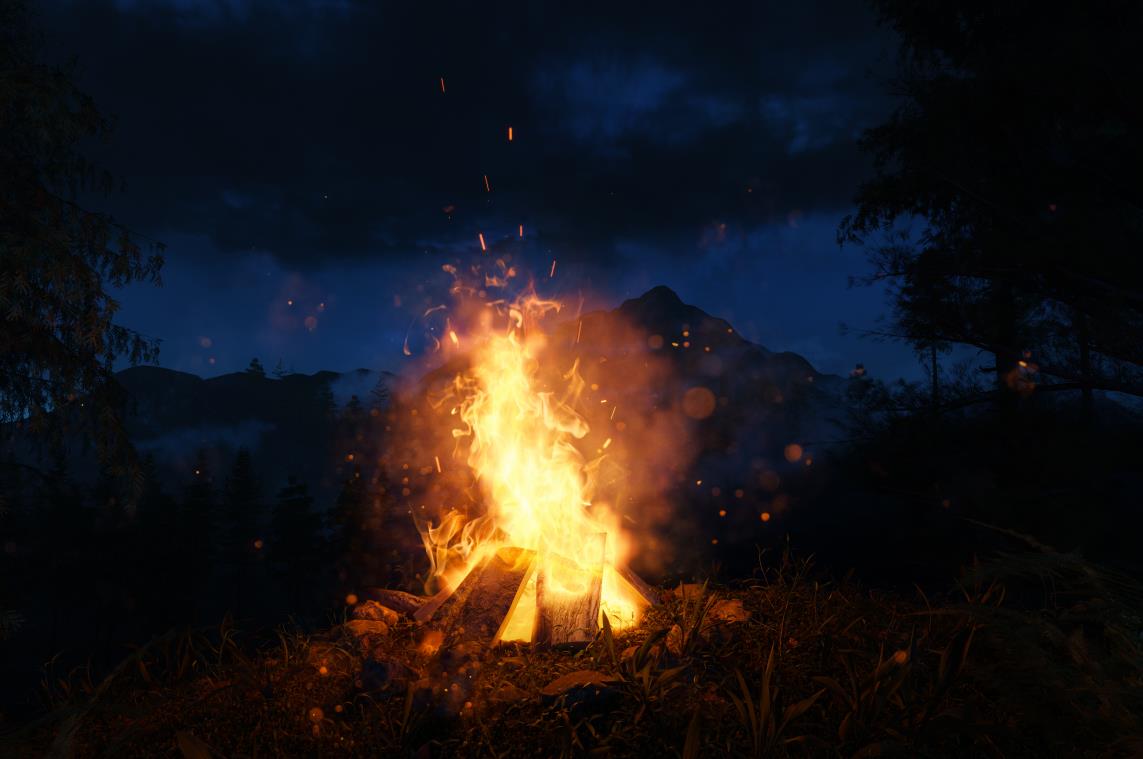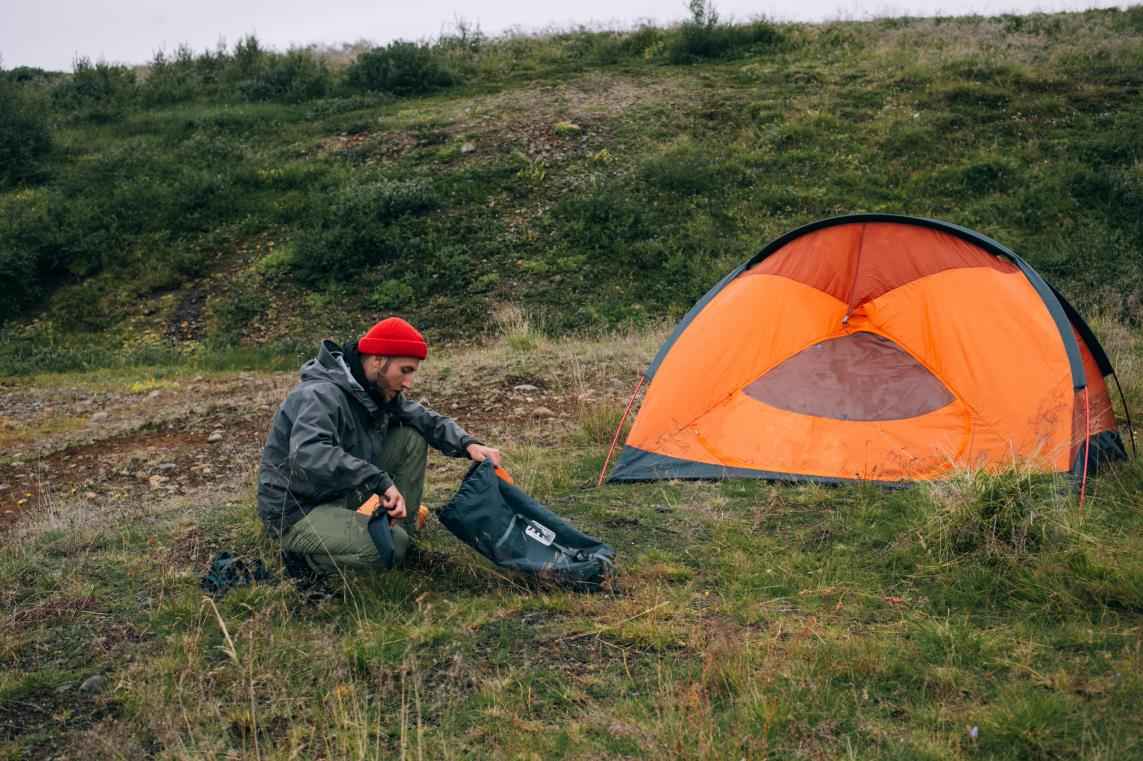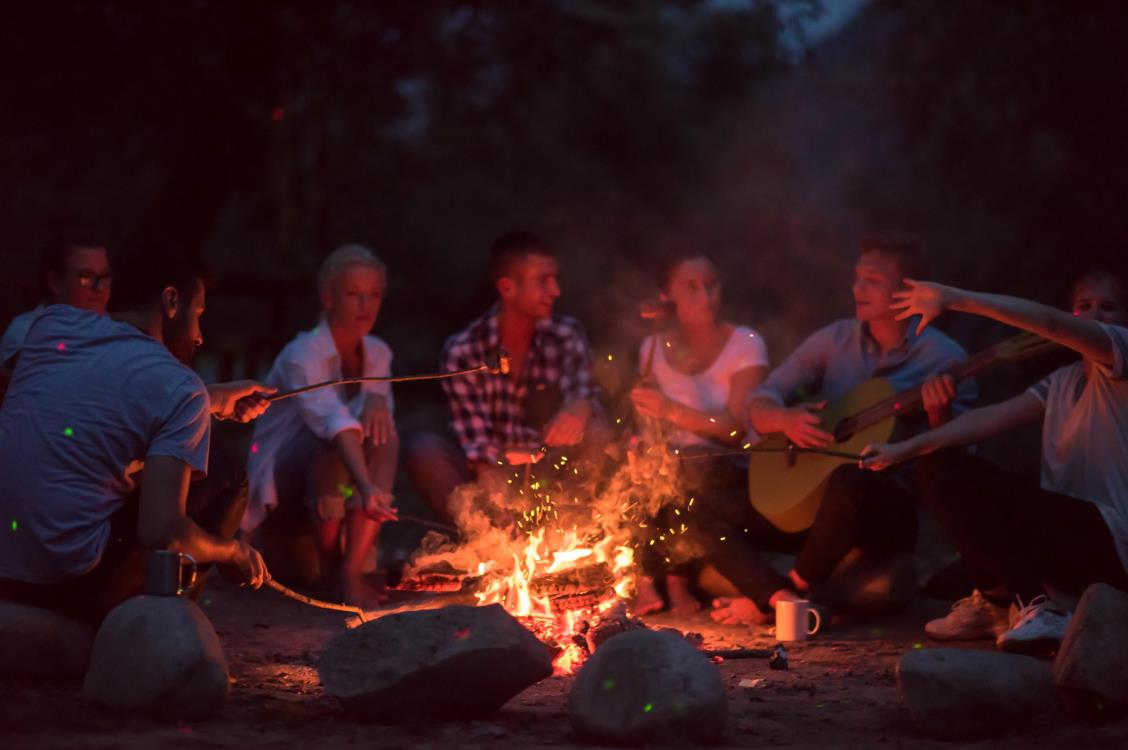A crackling campfire can create the perfect atmosphere for an unforgettable camping experience. It not only provides warmth on chilly nights but also serves as a delightful gathering spot for countless stories and shared laughter. However, maintaining a campfire is crucial to ensure safety and uninterrupted enjoyment.
To keep your campfire going, a great starting point is selecting the appropriate location and preparing the site. Choosing an open area away from overhanging branches, dry leaves, and flammable structures can prevent potential disasters, while also enabling better airflow to feed your fire. Clear the area of debris and dig a shallow pit for added stability and control.
Having the right materials at hand is also essential in maintaining a steady campfire. Combining tinder, kindling, and firewood will create a well-balanced fire that can last for hours. Remember to create air channels while stacking the materials and monitor the fire regularly, adding logs or adjusting its structure as needed. Proper maintenance and attention will allow you to enjoy a safe and mesmerizing campfire throughout your camping trip. For a more detailed guide on how to keep your campfire going, read on!
Table of contents
Selecting proper fuel for fire
Choosing the appropriate fuel is the cornerstone for maintaining a strong campfire, as you will consistently introduce fuel to sustain the fire.
Using the right wood
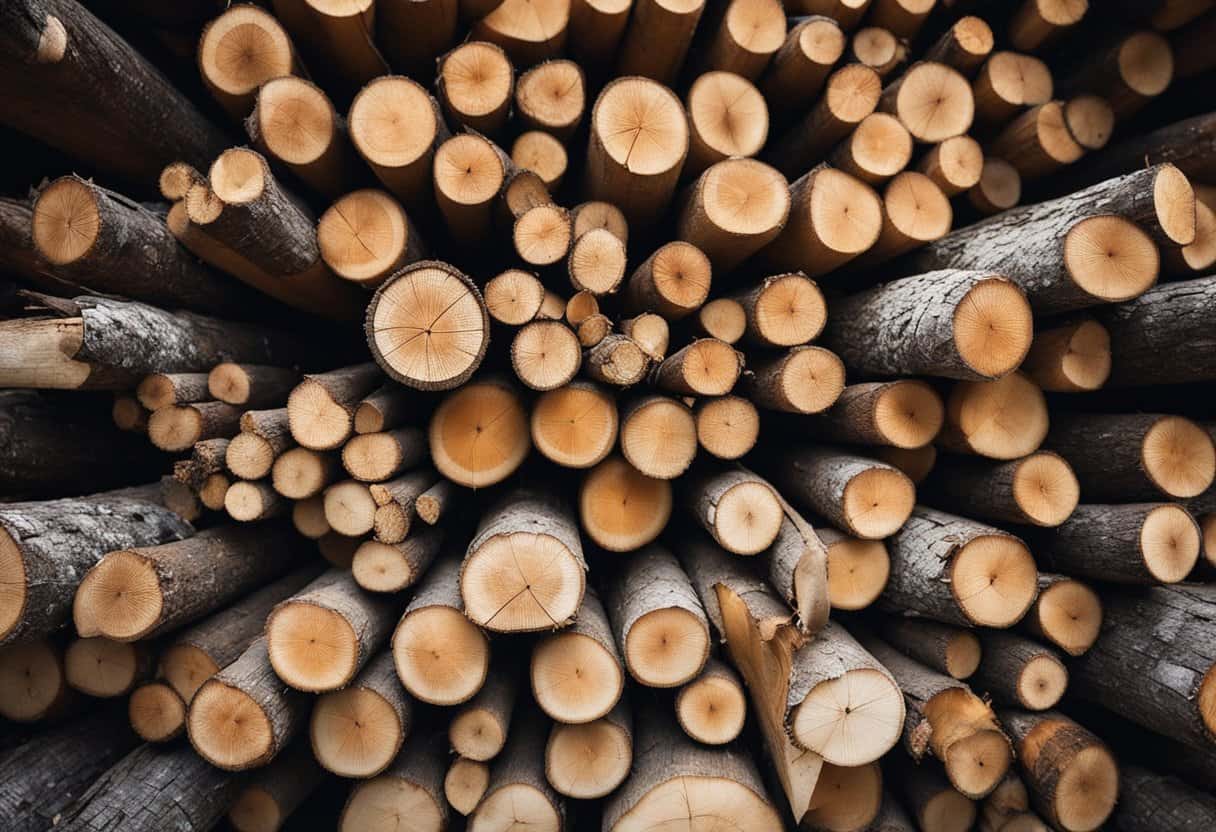
Both hardwoods and softwoods can be used, but each has its own advantages and disadvantages. Hardwoods like oak, birch, maple, and hickory provide long-lasting, steady heat, but they can be more challenging to ignite. On the other hand, softwoods like pine and cedar are easier to light but burn faster and produce less heat. To ensure your fire has a good balance of ease to ignite and longevity, consider using a mixture of hardwood and softwood. Always remember to use seasoned firewood, as it’s dry and burns more efficiently.
Kindling and tinder
Proper kindling and tinder are essential for a successful campfire. Tinder encompasses small, easily combustible materials that help the initial flame take hold, such as dry grass, leaves, or small twigs. Once the tinder catches fire, it helps ignite the kindling, which consists of slightly larger sticks and wood pieces. Both tinder and kindling should be dry, as wet wood will not ignite easily.
Fire starters
Sometimes, natural tinder can be hard to find or may be damp, making it difficult to get your fire going. In these situations, consider using a firestarter to help with the ignition process. Some popular fire starters include:
- Wax-based: These are often small cubes made of paraffin wax mixed with wood shavings, offering a long-lasting flame that can ignite even damp wood.
- Compressed sawdust: These small, dense blocks made from compressed sawdust and wax are easy to light and offer a decent burn time.
- Dryer lint: A simple DIY option – dryer lint can be highly effective when used with kindling.
By selecting the right wood, using proper kindling and tinder, and having backup fire starters on hand, you can ensure your campfire will keep burning brightly throughout your outdoor adventure. Remember to always keep an eye on your fire and never leave it unattended. Stay safe and enjoy the warmth of your well-kept campfire!
Building your campfire
Building a campfire begins with selecting the right location. Look for level ground, protected from wind and away from flammable materials such as trees or dry leaves. Make sure the campfire is kept away from camping gear or tents. Clear the area down to bare soil.
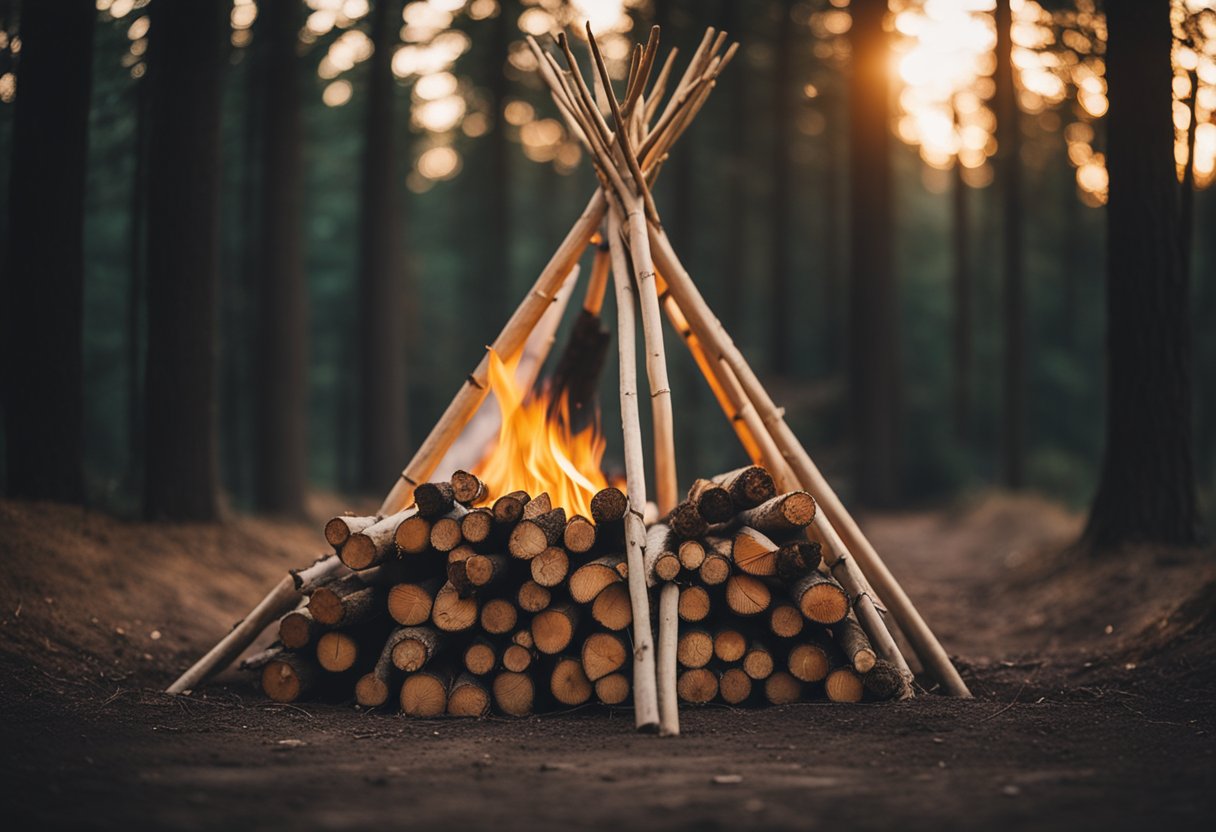
Once you’ve chosen the location, gather the materials necessary for your campfire. Start with small, dry twigs for kindling and progressively larger sticks, branches, and logs for fuel. Your kindling is what will initially create the heat and light required for a campfire, so make sure it’s adequately sized.
Building a campfire begins with selecting the right location. Look for level ground, protected from wind and away from flammable materials such as trees or dry leaves. Make sure the campfire is kept away from camping gear or tents. Clear the area down to bare soil.
Once you’ve chosen the location, gather the materials necessary for your campfire. Start with small, dry twigs for kindling and progressively larger sticks, branches, and logs for fuel. Your kindling is what will initially create the heat and light required for a campfire, so make sure it’s adequately sized.
Now, let’s set up the campfire. There are different methods to arrange the fire materials, two popular ones being the self-feeding fire and the teepee-style fire.
Self-feeding fire
A self-feeding fire is created by stacking larger logs horizontally in alternating layers, then placing kindling and small twigs in the center. Over time, the logs above will catch fire and fall inward, minimizing the need to constantly add fuel.
- Lay down two larger logs parallel to each other.
- Place small twigs and kindling on top of the logs, near the center.
- Lay two more larger logs perpendicular on top of the bottom logs.
- Continue alternating the direction of the layers until you reach the desired height.
- Light the kindling in the center.
Teepee-style fire
A teepee-style fire is made by creating a cone-shaped structure with the kindling and branches, leaving an opening for air circulation. This method allows for considerable heat and light output.
- Place a small bundle of kindling in the center of your cleared area.
- Lean branches, twigs, and smaller sticks around the kindling like a teepee, leaving a small access point on one side.
- Once your teepee structure is stable, add larger logs around the outside, also in a teepee formation.
- Light the kindling in the center through the access point.
Regardless of the chosen method, it’s essential to cover the fire with a layer of ash when you’re finished. The ash helps smother the fire and ensures it’s extinguished entirely. Always practice campfire safety and make sure your fire is never left unattended.
Regardless of the chosen method, it’s essential to cover the fire with a layer of ash when you’re finished. The ash helps smother the fire and ensures it’s extinguished entirely. Always practice campfire safety and make sure your fire is never left unattended.
How to maintain a campfire
Now to the focal point of this article. Keeping a campfire going simply requires you to constantly add fuel to the pit. But you won’t always have the perfect condition to maintain a burning fire. Here are some tips if the campsite is rough on maintaining a campfire.
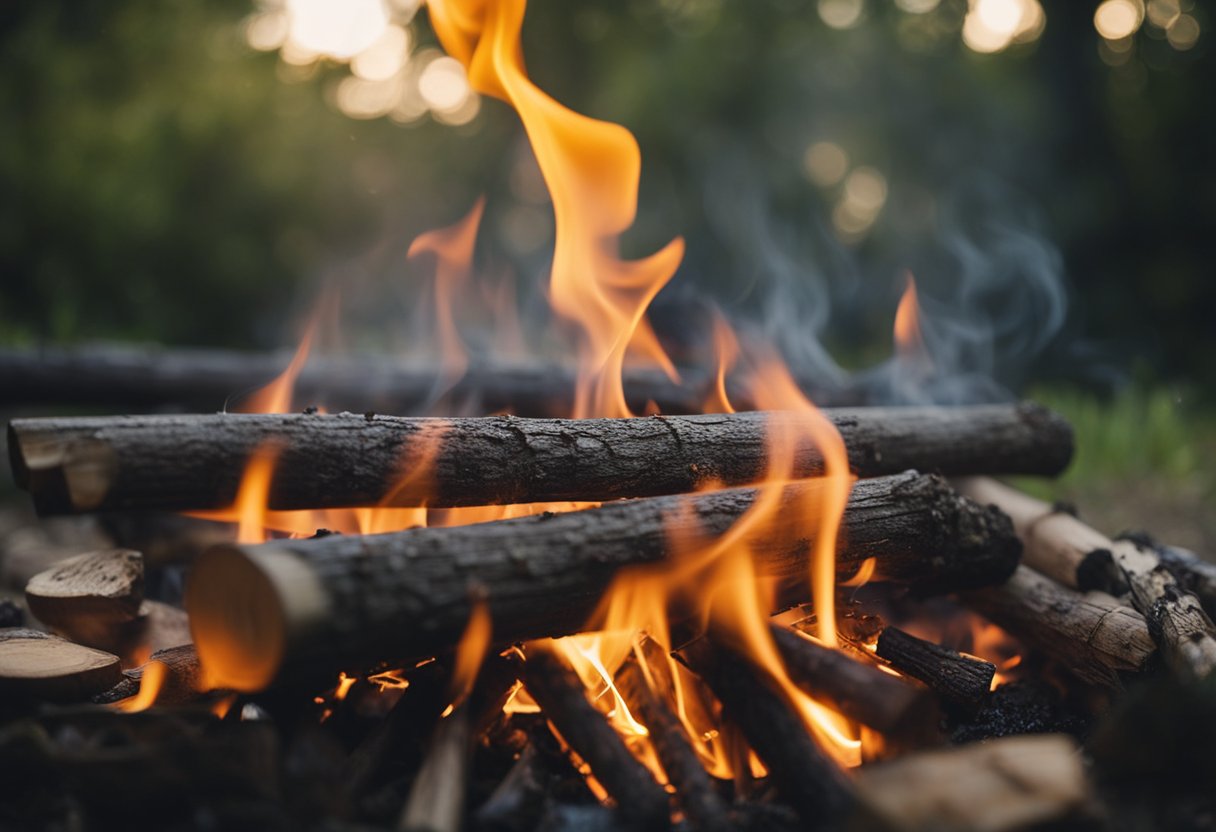
Keeping fire going in the rain
When it starts raining during your camping trip, it’s essential to adapt and change your fire management techniques. One effective method to protect your campfire in the rain is by using a tarp. Securely tie the tarp above the fire with a distance of at least 3 feet or more for safety. Attach the tarp to surrounding trees or poles to create an angled canopy that will shed water away from your campfire.
Tinfoil can also help keep your fire going in the rain. Wrap dry logs with tinfoil to protect them from moisture before adding them to the fire. Be sure to remove any plastic bags used for covering the wood before burning, as burning plastic releases harmful fumes.
Prolong a fire during high humidity
In a high humidity environment, campfire management can be more challenging, but it’s not impossible to maintain a vibrant fire under such conditions. One approach to tackle this issue is to focus on the quality of your fuel sources. Dry, seasoned wood will burn longer and hotter in humid conditions than freshly cut logs. If possible, use a mix of hardwood, like oak or maple, and softer woods, like pine or cedar.
Additionally, create a raised fire platform by placing a layer of rocks or branches on the ground. This will allow for better airflow and reduce the amount of moisture that is drawn from the ground.
By applying the advice shared in this section, you can keep your campfire going even during unfavorable weather conditions like rain and high humidity.
Ensuring fire safety
Keeping a campfire going is important, but ensuring fire safety should always be your top priority. To maintain a safe environment, there are certain precautions you should take while tending your fire.
First, make sure you have plenty of water nearby to douse your fire if necessary. A bucket or large container filled with water should be readily available. In addition to water, it’s also a good idea to have some dirt or sand on hand to smother the fire in case of an emergency.
To create a safe fire space, clear the area of flammable materials and create a fire pit. Dig a shallow hole surrounded by stones or rocks to contain your fire. This barrier will help prevent the fire from spreading to nearby vegetation.
Never leave your campfire unattended. Even a small breeze can unexpectedly fan the flames and cause them to grow rapidly. It’s essential to keep watch over your fire, even if you only plan to step away for a short time. If you need to leave the area, fully extinguish the fire by dousing it with water and stirring the embers.
Finally, always follow general fire safety guidelines, such as keeping your fire small and manageable, using only approved fire-starting materials, and keeping your firewood properly stacked.
By following these fire safety tips, you can enjoy a warm and cozy campfire while also ensuring the safety of yourself, your campsite, and the surrounding environment.
Cooking and Warmth
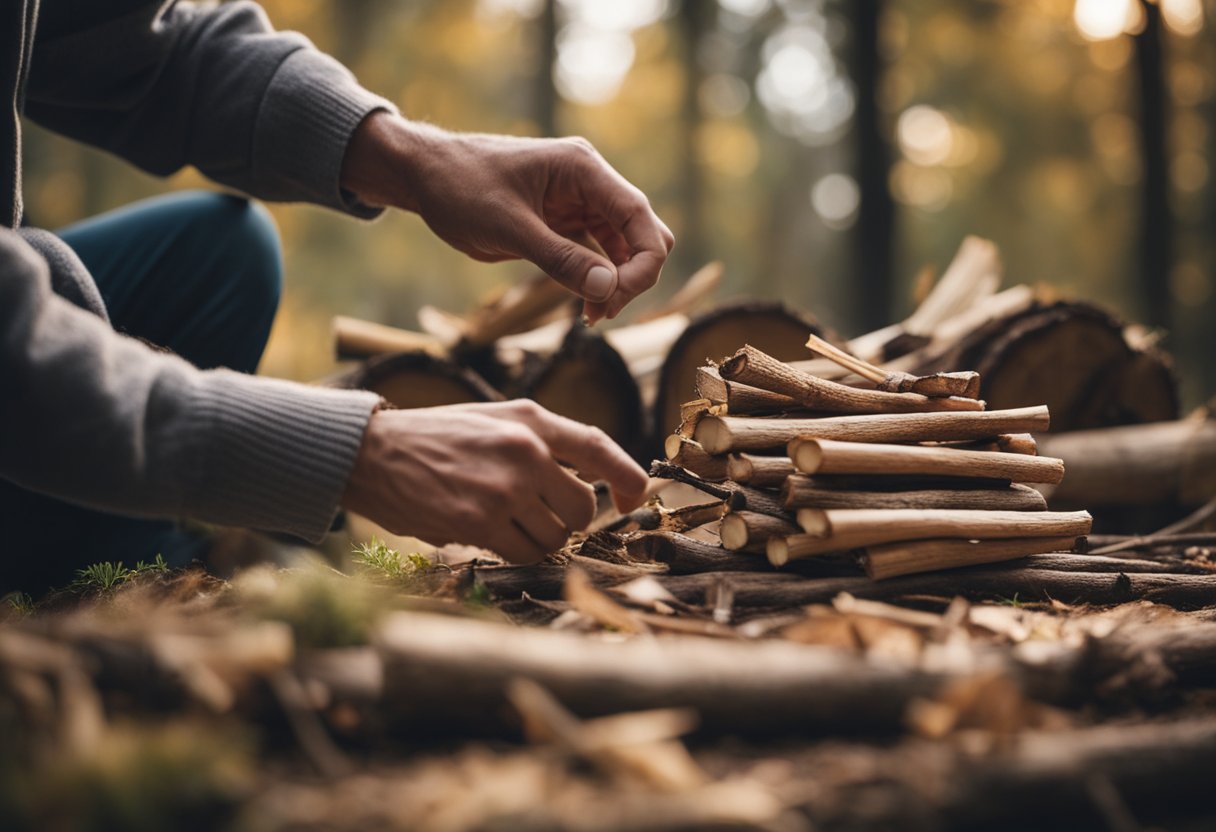
A well-maintained campfire not only provides warmth, it also creates a functional space for cooking. Maintaining the right temperature and controlling the smoke are key aspects of a successful campfire.
To ensure adequate warmth near the campfire, opt for a fire reflector on one side of the fire. This can be built using logs or stones, and helps to direct heat towards your sitting area. Remember to leave enough space between your reflector and the actual fire to not impose any harm.
If you are determine to make a campfire feast but don’t know where to start, we’ve put together a complete camp cooking guide from reciep recommendations to equipment lists.
Handpicked for you
True cutting power in the palm of your hand
How to extinguish a campfire
You’ll inevitably need to extinguish the campfire. And it’s important to do it safely and effectively. Follow these steps to do it right:
When it’s time to put out your campfire, it’s crucial to do it safely and effectively. Follow these steps to ensure you extinguish your campfire properly.
- Let the fire die down: Allow the wood and embers to burn down as much as possible. This will make it easier to extinguish the remaining hot spots and leave behind less ash.
- Spread the ashes: Use a shovel or stick to spread out the ashes and embers evenly, creating an even layer. This will help them cool down faster and reduce the risk of fire flare-ups.
- Add water to the mix: Pour water slowly and evenly onto the ashes. Make sure to cover all remaining embers thoroughly. Listen for hissing sounds and watch for steam as this signals the extinguishing process.
- Stir the mixture: Use your shovel or stick to stir the soggy ashes, ensuring that the water reaches every ember and ash particle. This step is vital for achieving complete extinguishment.
- Check for heat: Carefully hold your hand just above the wet ashes. If you still feel heat or see any smoke, add more water and stir again until the fire is completely out.
Keep these safety tips in mind while extinguishing a campfire:
- Always have water and a shovel nearby before starting the fire.
- Never leave a campfire unattended or allow children to play around it unsupervised.
- Be cautious when handling ashes, as they can remain hot for a long time.
- Dispose of the cooled ashes in a designated receptacle or scatter them in a safe area away from your campsite.
Keep a lasting flame
Keeping a lively campfire to illuminate your campsite is crucial. It is not only a source if warmth but also enabling you to prepare meals whenever needed. As long as you adhere to safety guidelines and know how to properly extinguish a campfire, everything will run smoothly.
If you’re interested in enhancing your camping experience with campfire cooking, it’s best to have top-notch equipment at your disposal. This includes a durable camping knife. Explore our collection to discover the finest handmade camping knives that will elevate your outdoor cooking adventures!







